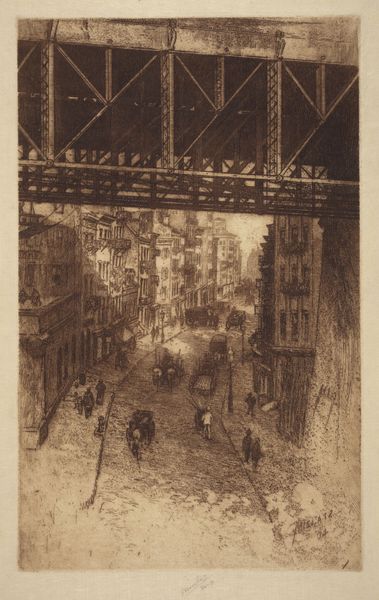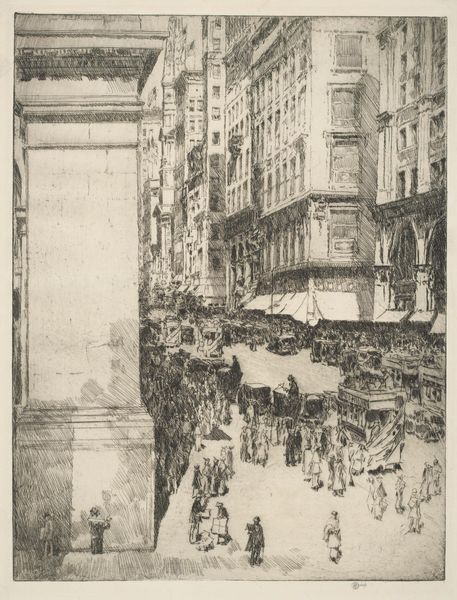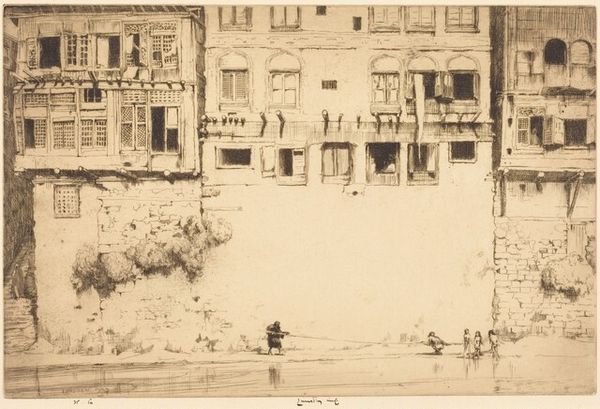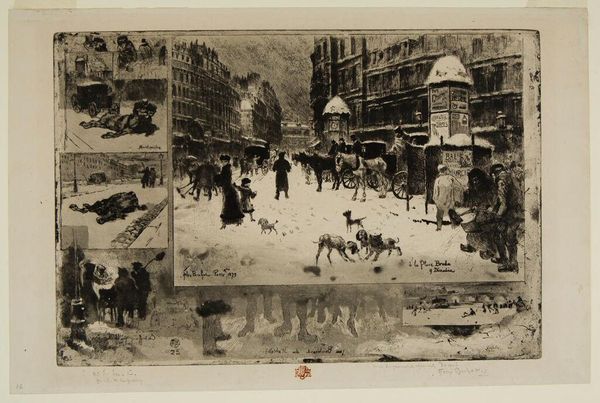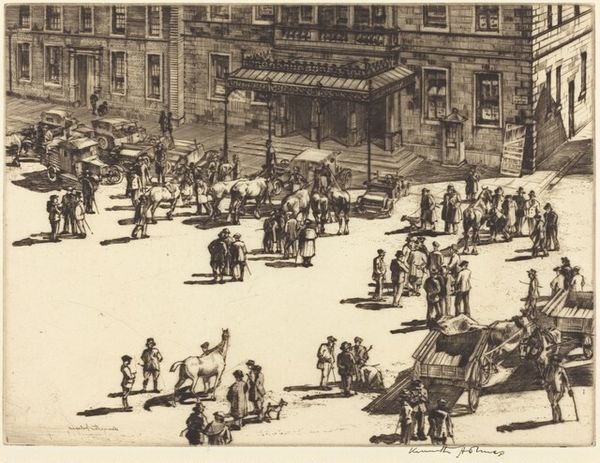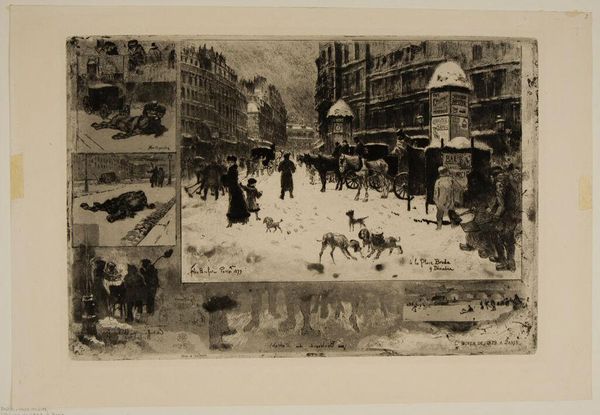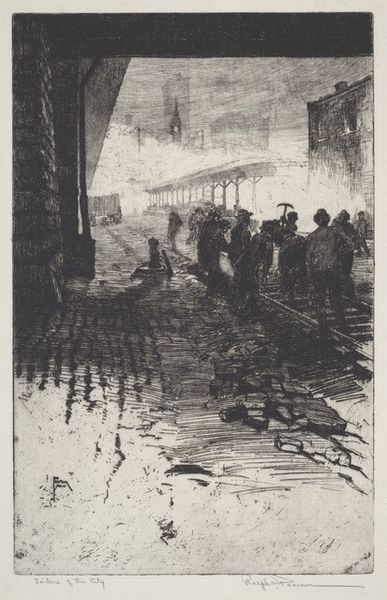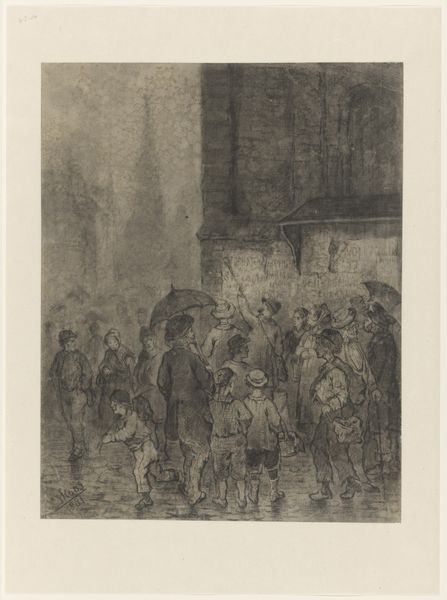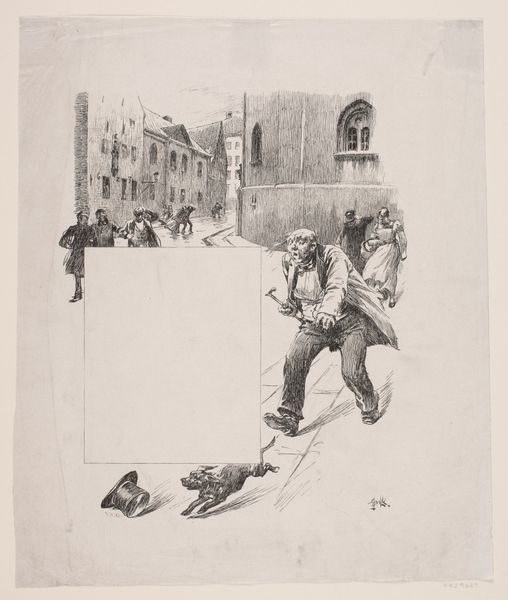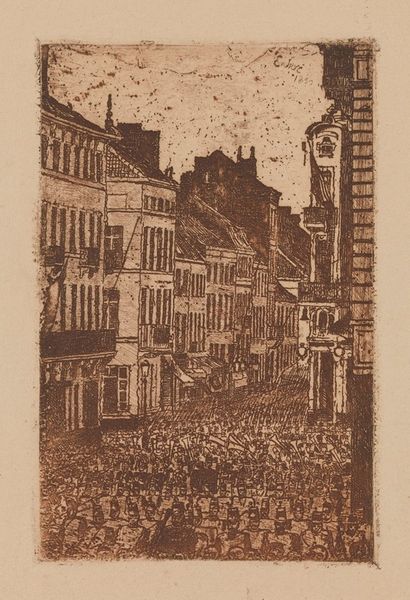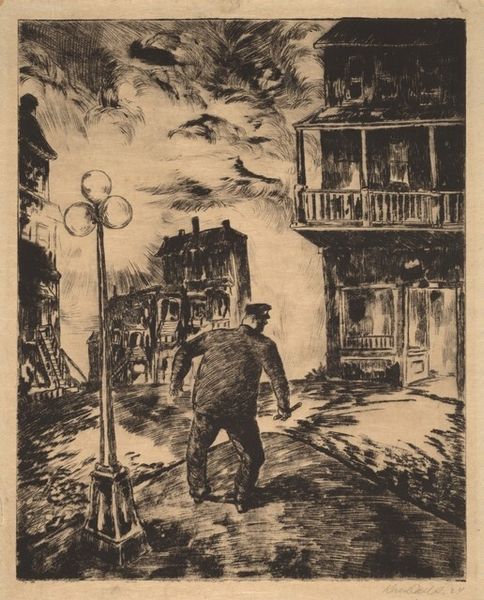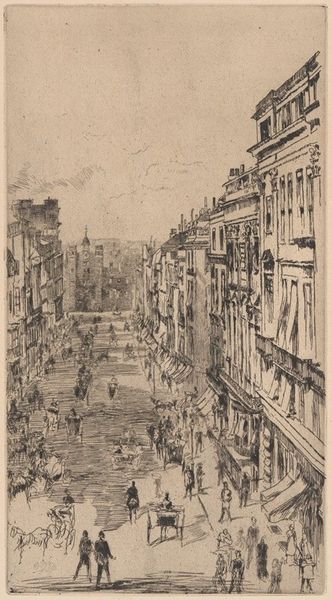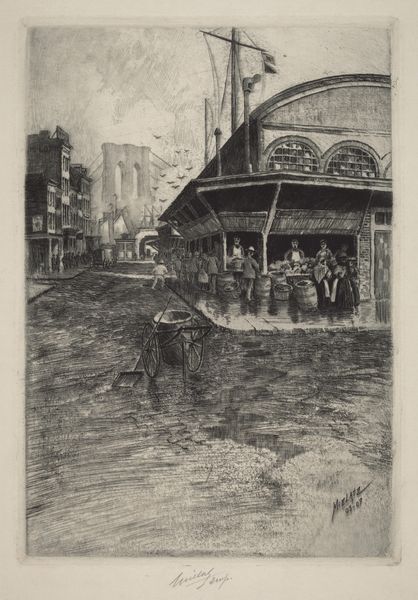
Dimensions: Image: 276 x 203 mm Sheet: 353 x 280 mm
Copyright: National Gallery of Art: CC0 1.0
Editor: Here we have Ralph M. Pearson’s etching, "The Asphalters, Wabash Ave.," created in 1911. The swirling lines and muted tones create a smoky, almost oppressive atmosphere. What stands out to you most when you look at this piece? Curator: The image to me immediately speaks of labor and the often invisible hands that build our cities. Look at these figures toiling, their movements blurred, almost ghostlike. Pearson created this work during a period of massive urban expansion and industrialization. Editor: Yes, they seem burdened! I almost missed that. Can you expand on the social context here? Curator: Absolutely. Who were these asphalters? Often, they were recent immigrants or marginalized workers, subjected to harsh conditions for low pay. Pearson’s choice of medium – the print – is important too, as prints were widely accessible and aimed for distribution among ordinary people, as if the artist was speaking for them. Do you notice anything about the composition itself? Editor: The angle makes me, as the viewer, almost feel like I’m on the sidelines, just watching them. Is that intentional? Curator: Exactly. Consider also the towering buildings and the steam rising from the asphalt; we see the vast scale of industrial Chicago versus the individual. It’s a poignant comment on progress, don't you think, asking us to question who benefits and at what cost? Editor: It does make you think about whose stories are being told—and whose aren't. Thanks for showing me what’s at work here. Curator: My pleasure! Seeing art as part of a larger cultural conversation always makes it richer for me.
Comments
No comments
Be the first to comment and join the conversation on the ultimate creative platform.
